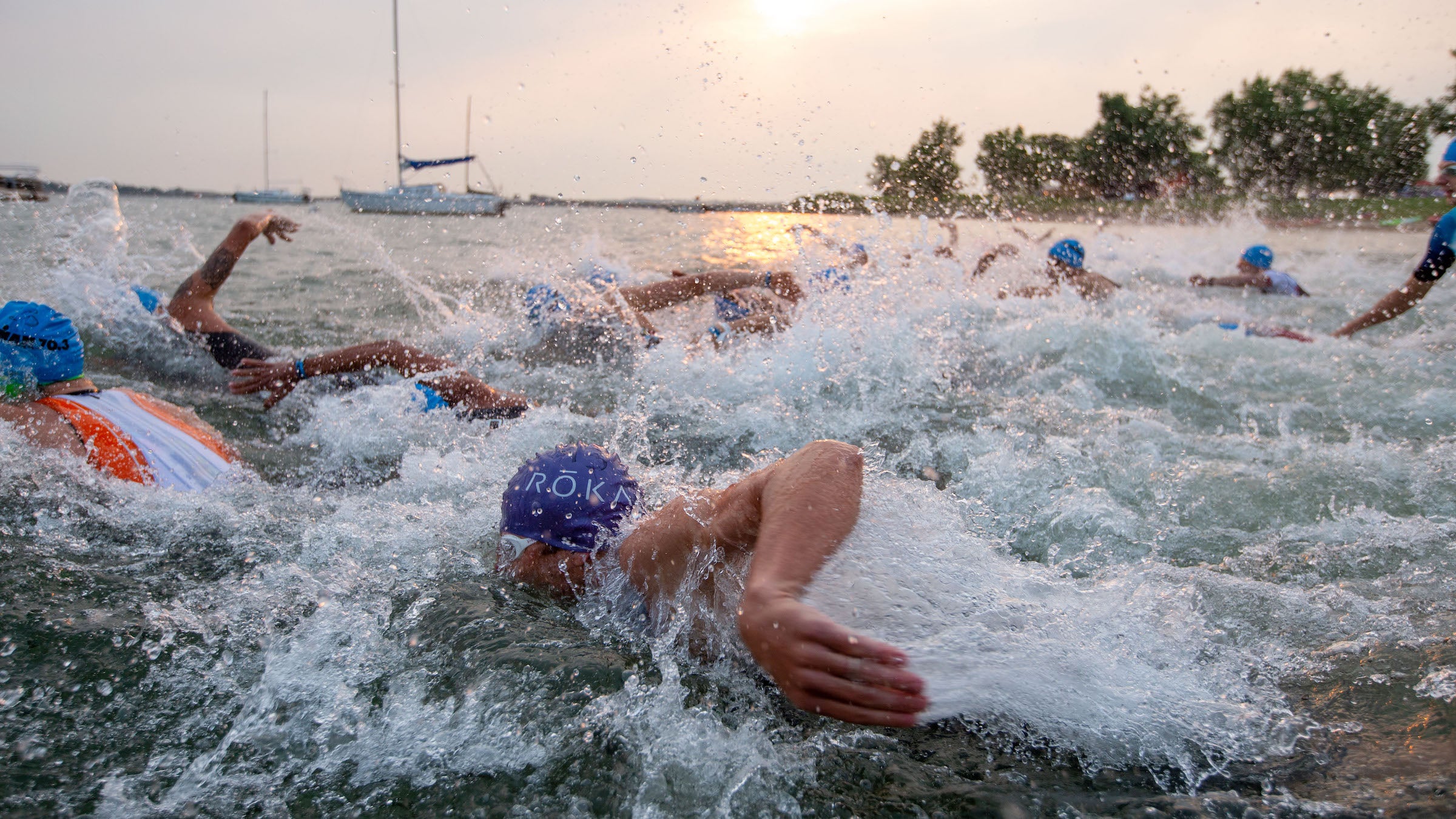Dear Coach: What Are Your Go-To Open-Water Swim Drills?

Photo: Brad Kaminski (Photo: Brad Kaminski)
Open-water swimming can be one of the most intimidating parts of a triathlon, especially for newbies and first-timers. I always tell my athletes that the best way to reduce their fears is to practice in the open water—and do so often! A lake or ocean swim is vastly different from a lap pool, so it is best to get used to the conditions you will face on race day. Below, you’ll find some great drills for improving your open-water swimming that will help you feel more comfortable and confident at your next race. Practice often and remember to always swim with a buddy and use your swim buoy for added safety.
RELATED: Video: Key Skills You Need to Become a Successful Open-Water Swimmer
Dear Coach: What are some good open-water swim drills?
Floating and Sculling
Take this time to get used to having no lane markers, no wall, and no visibility of the bottom. Practice floating on your back with gentle sculling; practice side stroking and easy breaststroking. Practice treading water for 1-2 minutes then coming back to a horizontal position. Check out the visibility with your goggles on, both underwater and with your head up. If you need to make adjustments to your goggles due to water conditions or sun, our gear guru has recommendations: Which Type of Goggles Should I Wear Today?
Swim Straight Drill
Swim with your eyes closed for about 10-20 strokes and see where you end up. It’s helpful if someone on the land can watch you do this to see if you veer to the left or to the right. If’ you’re not swimming straight, remind yourself to sight more often, ideally about every three to five strokes.
Sighting Drill
Choose your landmarks ahead of time—preferably an immovable object on the shore such as a building or a tree. Your goggles should be just barely above the water line when sighting. As you begin the right arm pull, instead of turning your head to breathe, you should extend your neck forward looking ahead to grab a glance. The pushing down of your right hand against the water will hold your head up for a split second. Sighting is recommended every six to 10 strokes or every three to five if you have trouble with swimming straight. To learn more about sighting, read It’s Time to Become an Open-Water Sighting Expert.
Polo Drill
This is simply swimming with your head raised up out of the water, water polo style. It can help to improve your sighting.
Swim Straight Drill
It helps to know which way you drift or veer—many of us have in-built asymmetries that can contribute to this. You can easily find this out by swimming in a lane with your eyes closed, then open them every few strokes and see where you are relative to the black line. Swimming straight can save you a lot of time and effort. No one wants to swim further than they need to!
Drafting
Getting directly behind someone or on another swimmer’s hip can keep you at your race pace without having to work as hard (it’s science). I always tell my athletes to look for bubbles and don’t swim so close that you are constantly hitting their feet. Also, it’s important to remember that you should still sight for yourself; don’t just follow the feet in front of you as there’s no guarantee the swimmer is staying on course.
Bilateral breathing
This is best practiced in the pool during warm-up or within a few main sets. It feels awkward at first but is well worth the effort. Bilateral breathing refers to breathing either side (i.e., not just to your left or right). It is invaluable as quite often in a race you’ll need to be able to breathe to both sides due to conditions or drafting. For more on bilateral breathing, check out this article: Why (And How) To Learn To Bilateral Breathe
Rounding the Buoy Drill
As you approach the buoy, try to cut the turn as tightly as possible (even if you have to use short quick strokes), and practice maneuvering as smoothly and quickly as you can, ideally with some training buddies so you get used to the close proximity of other swimmers. Be careful not to drop your legs/hips too much and kill all of your speed; you should aim to swim around the buoy as quickly as possible. You can also try doing a 360-degree turn with a few strokes of backstroke at the turnaround. To improve your turns, read our guide on how to Swim Turn Buoys Better.
Safety Swim Drill
This can be easy breaststroke, easy sculling, side stroke, or swimming easy with your head out of the water. This is your go-to stroke if you are tired, are feeling anxious, or just need a few strokes of rest during your race.
Wetsuit Drill
Practice getting out of the water and taking off your wetsuit in the quickest time possible. It helps to have someone time you and/or race with training buddies. As you run to the shore out of the lake or ocean, put your goggles on your head while unzipping your wetsuit to your waist. Run with the wetsuit at waist length until you get to T1. Practice pulling the suit down and stepping out of it quickly. This should be a routine part of practicing triathlon transitions.